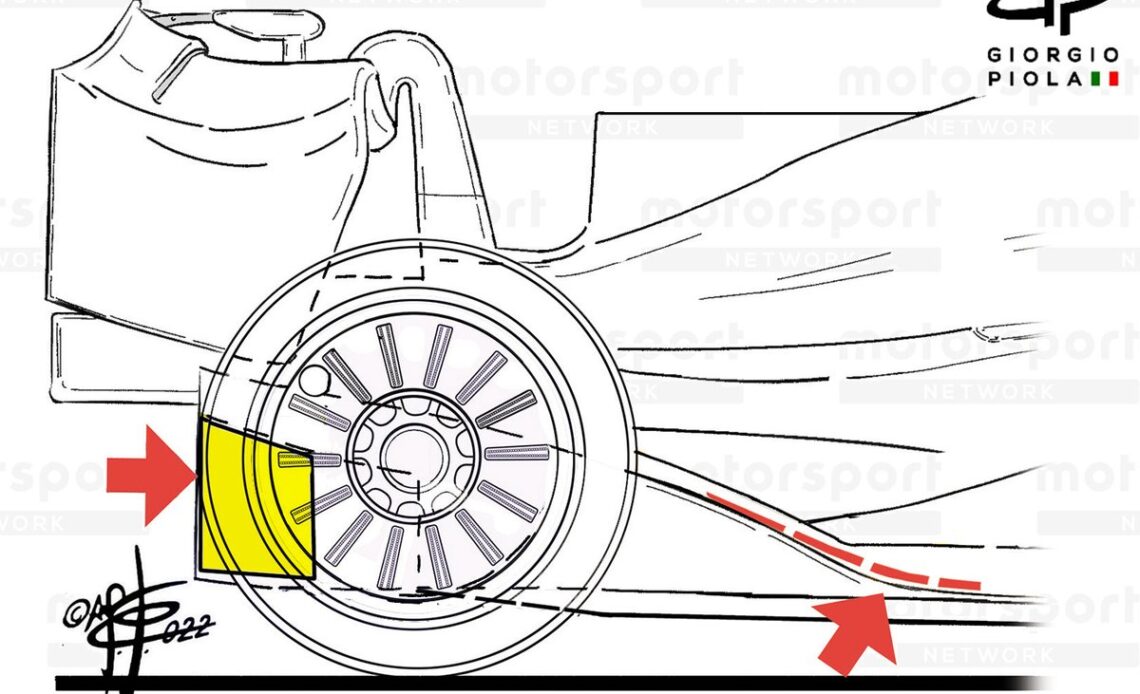While all teams have experienced it to a greater or lesser extent, driver complaints about the safety implications of some of the worst bouncing eventually triggered the FIA into action.
In a move that has proved controversial with teams, the FIA is introducing an Aerodynamic Oscillation Metric (AOM) from the Belgian Grand Prix that will limit the amount of vertical movements cars can have on track.
But that is just a temporary measure; for 2023, changes are planned to the technical regulations that motor racing’s governing body believes will reduce the risks of porpoising being a hindrance going forward.
The planned changes were discussed in a meeting of F1’s Technical Advisory Committee last week and are now set to be put to the FIA’s World Motor Sport Council for rubber stamping.
The proposals set out in the TAC meeting are aimed at limiting the design scope of the cars by lifting some of them up off the ground.
This includes raising the throat of the diffuser, by a yet-to-be-determined amount, whilst the floor edges will also be raised by 25mm. Plus, in order that the teams don’t overtly flex the floor edges to overcome these new dimensional restrictions, more stringent lateral floor deflection tests will be introduced.
The FIA also plans to monitor things more closely, with the introduction of a more accurate sensor that will help to quantify the aerodynamic oscillation of the car.
To further curb the aerodynamic issues that have been created by the new regulations, teams have also suggested the use of a pair of strakes within the diffuser.
2023 side view diffuser strake
Photo by: Giorgio Piola
A simple and highly prescribed solution is expected to help manage flow in this region and help tackle the ill effects posed by bouncing and porpoising, something that will certainly be welcomed by the drivers.
In many ways, the changes that have been proposed are similar to those in 2021, when the sport opted to trim the floor, brake winglets and diffuser strakes to help de-power the aerodynamic potential of the car’s rear end.
Such a move was done to essentially save the teams from themselves as they would likely have put designed cars that put too much stress on the tyres, which would have caused even bigger problems. In much the same way as those 2021 tweaks, these latest changes will reduce the peak loads that are imparted on the chassis, and – with that – help to reduce the potential for porpoising and bouncing.
That said, teams will…
Click Here to Read the Full Original Article at Motorsport.com – Formula 1 – Stories…

